-
EXECUTIVE SUMMARY
-
MARKET INTRODUCTION
-
Definition
-
Scope of the Study
- Research Objective
- Assumptions
- Limitations
-
RESEARCH METHODOLOGY
-
Overview
-
Data Mining
-
Secondary Research
-
Primary Research
- Primary Interviews and Information Gathering Process
- Breakdown of Primary Respondents
-
Forecasting Model
-
Market Size Estimation
- Bottom-Up Approach
- Top-Down Approach
-
Data Triangulation
-
Validation
-
MARKET DYNAMICS
-
Overview
-
Drivers
-
Restraints
-
Opportunities
-
MARKET FACTOR ANALYSIS
-
Value Chain Analysis
-
Porter’s Five Forces Analysis
- Bargaining Power of Suppliers
- Bargaining Power of Buyers
- Threat of New Entrants
- Threat of Substitutes
- Intensity of Rivalry
-
COVID-19 Impact Analysis
- Market Impact Analysis
- Regional Impact
- Opportunity and Threat Analysis
-
GLOBAL AEROSPACE & DEFENSE FLUID CONVEYANCE SYSTEMS MARKET, BY TYPE
-
Overview
-
Titanium & Titanium Alloys
-
Stainless Steel & Alloys
-
Composites
-
GLOBAL AEROSPACE & DEFENSE FLUID CONVEYANCE SYSTEMS MARKET, BY APPLICATION
-
Commercial Aircraft
-
General Aviation
-
Military Aircraft
-
GLOBAL AEROSPACE & DEFENSE FLUID CONVEYANCE SYSTEMS MARKET, BY REGION
-
Overview
-
North America
- US
- Canada
-
Europe
- Germany
- France
- UK
- Italy
- Spain
- Rest of Europe
-
Asia-Pacific
- China
- India
- Japan
- South Korea
- Australia
- Rest of Asia-Pacific
-
Rest of the World
- Middle East
- Africa
- Latin America
-
COMPETITIVE LANDSCAPE
-
Overview
-
Competitive Analysis
-
Market Share Analysis
-
Major Growth Strategy in the Global Aerospace & Defense Fluid Conveyance Systems Market,
-
Competitive Benchmarking
-
Leading Players in Terms of Number of Developments in the Global Aerospace & Defense Fluid Conveyance Systems Market,
-
Key developments and Growth Strategies
- New Product Launch/Service Deployment
- Merger & Acquisitions
- Joint Ventures
-
Major Players Financial Matrix
- Sales & Operating Income, 2024
- Major Players R&D Expenditure. 2024
-
COMPANY PROFILES
-
Parker Hannifin
- Company Overview
- Financial Overview
- Products Offered
- Key Developments
- SWOT Analysis
- Key Strategies
-
Eaton Aerospace
- Company Overview
- Financial Overview
- Products Offered
- Key Developments
- SWOT Analysis
- Key Strategies
-
Zodiac Aerospace
- Company Overview
- Financial Overview
- Products Offered
- Key Developments
- SWOT Analysis
- Key Strategies
-
ITT Aerospace
- Company Overview
- Financial Overview
- Products Offered
- Key Developments
- SWOT Analysis
- Key Strategies
-
Senior Aerospace
- Company Overview
- Financial Overview
- Products Offered
- Key Developments
- SWOT Analysis
- Key Strategies
-
Flexfab
- Company Overview
- Financial Overview
- Products Offered
- Key Developments
- SWOT Analysis
- Key Strategies
-
Steico Industries
- Company Overview
- Financial Overview
- Products Offered
- Key Developments
- SWOT Analysis
- Key Strategies
-
Toray Industries
- Company Overview
- Financial Overview
- Products Offered
- Key Developments
- SWOT Analysis
- Key Strategies
-
GKN Aerospace
- Company Overview
- Financial Overview
- Products Offered
- Key Developments
- SWOT Analysis
- Key Strategies
-
Meggitt PLC
- Company Overview
- Financial Overview
- Products Offered
- Key Developments
- SWOT Analysis
- Key Strategies
-
APPENDIX
-
References
-
Related Reports
-
LIST OF TABLES
-
GLOBAL AEROSPACE & DEFENSE FLUID CONVEYANCE SYSTEMS MARKET, SYNOPSIS, 2025 -2034
-
GLOBAL AEROSPACE & DEFENSE FLUID CONVEYANCE SYSTEMS MARKET, ESTIMATES & FORECAST, 2025 -2034 (USD BILLION)
-
GLOBAL AEROSPACE & DEFENSE FLUID CONVEYANCE SYSTEMS MARKET, BY TYPE, 2025 -2034 (USD BILLION)
-
GLOBAL AEROSPACE & DEFENSE FLUID CONVEYANCE SYSTEMS MARKET, BY APPLICATION, 2025 -2034 (USD BILLION)
-
NORTH AMERICA: AEROSPACE & DEFENSE FLUID CONVEYANCE SYSTEMS MARKET, BY TYPE, 2025 -2034 (USD BILLION)
-
NORTH AMERICA: AEROSPACE & DEFENSE FLUID CONVEYANCE SYSTEMS MARKET, BY APPLICATION, 2025 -2034 (USD BILLION)
-
US: AEROSPACE & DEFENSE FLUID CONVEYANCE SYSTEMS MARKET, BY TYPE, 2025 -2034 (USD BILLION)
-
US: AEROSPACE & DEFENSE FLUID CONVEYANCE SYSTEMS MARKET, BY APPLICATION, 2025 -2034 (USD BILLION)
-
CANADA: AEROSPACE & DEFENSE FLUID CONVEYANCE SYSTEMS MARKET, BY TYPE, 2025 -2034 (USD BILLION)
-
CANADA: AEROSPACE & DEFENSE FLUID CONVEYANCE SYSTEMS MARKET, BY APPLICATION, 2025 -2034 (USD BILLION)
-
EUROPE: AEROSPACE & DEFENSE FLUID CONVEYANCE SYSTEMS MARKET, BY TYPE, 2025 -2034 (USD BILLION)
-
EUROPE: AEROSPACE & DEFENSE FLUID CONVEYANCE SYSTEMS MARKET, BY APPLICATION, 2025 -2034 (USD BILLION)
-
GERMANY: AEROSPACE & DEFENSE FLUID CONVEYANCE SYSTEMS MARKET, BY TYPE, 2025 -2034 (USD BILLION)
-
GERMANY: AEROSPACE & DEFENSE FLUID CONVEYANCE SYSTEMS MARKET, BY APPLICATION, 2025 -2034 (USD BILLION)
-
FRANCE: AEROSPACE & DEFENSE FLUID CONVEYANCE SYSTEMS MARKET, BY TYPE, 2025 -2034 (USD BILLION)
-
FRANCE: AEROSPACE & DEFENSE FLUID CONVEYANCE SYSTEMS MARKET, BY APPLICATION, 2025 -2034 (USD BILLION)
-
ITALY: AEROSPACE & DEFENSE FLUID CONVEYANCE SYSTEMS MARKET, BY TYPE, 2025 -2034 (USD BILLION)
-
ITALY: AEROSPACE & DEFENSE FLUID CONVEYANCE SYSTEMS MARKET, BY APPLICATION, 2025 -2034 (USD BILLION)
-
SPAIN: AEROSPACE & DEFENSE FLUID CONVEYANCE SYSTEMS MARKET, BY TYPE, 2025 -2034 (USD BILLION)
-
SPAIN: AEROSPACE & DEFENSE FLUID CONVEYANCE SYSTEMS MARKET, BY APPLICATION, 2025 -2034 (USD BILLION)
-
UK: AEROSPACE & DEFENSE FLUID CONVEYANCE SYSTEMS MARKET, BY TYPE, 2025 -2034 (USD BILLION)
-
UK: AEROSPACE & DEFENSE FLUID CONVEYANCE SYSTEMS MARKET, BY APPLICATION, 2025 -2034 (USD BILLION)
-
REST OF EUROPE: AEROSPACE & DEFENSE FLUID CONVEYANCE SYSTEMS MARKET, BY TYPE, 2025 -2034 (USD BILLION)
-
REST OF EUROPE: AEROSPACE & DEFENSE FLUID CONVEYANCE SYSTEMS MARKET, BY APPLICATION, 2025 -2034 (USD BILLION)
-
ASIA-PACIFIC: AEROSPACE & DEFENSE FLUID CONVEYANCE SYSTEMS MARKET, BY TYPE, 2025 -2034 (USD BILLION)
-
ASIA-PACIFIC: AEROSPACE & DEFENSE FLUID CONVEYANCE SYSTEMS MARKET, BY APPLICATION, 2025 -2034 (USD BILLION)
-
JAPAN: AEROSPACE & DEFENSE FLUID CONVEYANCE SYSTEMS MARKET, BY TYPE, 2025 -2034 (USD BILLION)
-
JAPAN: AEROSPACE & DEFENSE FLUID CONVEYANCE SYSTEMS MARKET, BY APPLICATION, 2025 -2034 (USD BILLION)
-
CHINA: AEROSPACE & DEFENSE FLUID CONVEYANCE SYSTEMS MARKET, BY TYPE, 2025 -2034 (USD BILLION)
-
CHINA: AEROSPACE & DEFENSE FLUID CONVEYANCE SYSTEMS MARKET, BY APPLICATION, 2025 -2034 (USD BILLION)
-
INDIA: AEROSPACE & DEFENSE FLUID CONVEYANCE SYSTEMS MARKET, BY TYPE, 2025 -2034 (USD BILLION)
-
INDIA: AEROSPACE & DEFENSE FLUID CONVEYANCE SYSTEMS MARKET, BY APPLICATION, 2025 -2034 (USD BILLION)
-
AUSTRALIA: AEROSPACE & DEFENSE FLUID CONVEYANCE SYSTEMS MARKET, BY TYPE, 2025 -2034 (USD BILLION)
-
AUSTRALIA: AEROSPACE & DEFENSE FLUID CONVEYANCE SYSTEMS MARKET, BY APPLICATION, 2025 -2034 (USD BILLION)
-
SOUTH KOREA: AEROSPACE & DEFENSE FLUID CONVEYANCE SYSTEMS MARKET, BY TYPE, 2025 -2034 (USD BILLION)
-
SOUTH KOREA: AEROSPACE & DEFENSE FLUID CONVEYANCE SYSTEMS MARKET, BY APPLICATION, 2025 -2034 (USD BILLION)
-
REST OF ASIA-PACIFIC: AEROSPACE & DEFENSE FLUID CONVEYANCE SYSTEMS MARKET, BY TYPE, 2025 -2034 (USD BILLION)
-
REST OF ASIA-PACIFIC: AEROSPACE & DEFENSE FLUID CONVEYANCE SYSTEMS MARKET, BY APPLICATION, 2025 -2034 (USD BILLION)
-
REST OF THE WORLD: AEROSPACE & DEFENSE FLUID CONVEYANCE SYSTEMS MARKET, BY TYPE, 2025 -2034 (USD BILLION)
-
REST OF THE WORLD: AEROSPACE & DEFENSE FLUID CONVEYANCE SYSTEMS MARKET, BY APPLICATION, 2025 -2034 (USD BILLION)
-
MIDDLE EAST: AEROSPACE & DEFENSE FLUID CONVEYANCE SYSTEMS MARKET, BY TYPE, 2025 -2034 (USD BILLION)
-
MIDDLE EAST: AEROSPACE & DEFENSE FLUID CONVEYANCE SYSTEMS MARKET, BY APPLICATION, 2025 -2034 (USD BILLION)
-
AFRICA: AEROSPACE & DEFENSE FLUID CONVEYANCE SYSTEMS MARKET, BY TYPE, 2025 -2034 (USD BILLION)
-
AFRICA: AEROSPACE & DEFENSE FLUID CONVEYANCE SYSTEMS MARKET, BY APPLICATION, 2025 -2034 (USD BILLION)
-
LATIN AMERICA: AEROSPACE & DEFENSE FLUID CONVEYANCE SYSTEMS MARKET, BY TYPE, 2025 -2034 (USD BILLION)
-
LATIN AMERICA: AEROSPACE & DEFENSE FLUID CONVEYANCE SYSTEMS MARKET, BY APPLICATION, 2025 -2034 (USD BILLION)
-
LIST OF FIGURES
-
RESEARCH PROCESS
-
MARKET STRUCTURE FOR THE GLOBAL AEROSPACE & DEFENSE FLUID CONVEYANCE SYSTEMS MARKET
-
MARKET DYNAMICS FOR THE GLOBAL AEROSPACE & DEFENSE FLUID CONVEYANCE SYSTEMS MARKET
-
GLOBAL AEROSPACE & DEFENSE FLUID CONVEYANCE SYSTEMS MARKET, SHARE (%), BY TYPE, 2024
-
GLOBAL AEROSPACE & DEFENSE FLUID CONVEYANCE SYSTEMS MARKET, SHARE (%), BY APPLICATION, 2024
-
GLOBAL AEROSPACE & DEFENSE FLUID CONVEYANCE SYSTEMS MARKET, SHARE (%), BY REGION, 2024
-
NORTH AMERICA: AEROSPACE & DEFENSE FLUID CONVEYANCE SYSTEMS MARKET, SHARE (%), BY REGION, 2024
-
EUROPE: AEROSPACE & DEFENSE FLUID CONVEYANCE SYSTEMS MARKET, SHARE (%), BY REGION, 2024
-
ASIA-PACIFIC: AEROSPACE & DEFENSE FLUID CONVEYANCE SYSTEMS MARKET, SHARE (%), BY REGION, 2024
-
REST OF THE WORLD: AEROSPACE & DEFENSE FLUID CONVEYANCE SYSTEMS MARKET, SHARE (%), BY REGION, 2024
-
GLOBAL AEROSPACE & DEFENSE FLUID CONVEYANCE SYSTEMS MARKET: COMPANY SHARE ANALYSIS, 2024 (%)
-
PARKER HANNIFIN: FINANCIAL OVERVIEW SNAPSHOT
-
PARKER HANNIFIN: SWOT ANALYSIS
-
EATON AEROSPACE: FINANCIAL OVERVIEW SNAPSHOT
-
EATON AEROSPACE: SWOT ANALYSIS
-
ZODIAC AEROSPACE: FINANCIAL OVERVIEW SNAPSHOT
-
ZODIAC AEROSPACE: SWOT ANALYSIS
-
ITT AEROSPACE: FINANCIAL OVERVIEW SNAPSHOT
-
ITT AEROSPACE: SWOT ANALYSIS
-
SENIOR AEROSPACE: FINANCIAL OVERVIEW SNAPSHOT
-
SENIOR AEROSPACE: SWOT ANALYSIS
-
FLEXFAB: FINANCIAL OVERVIEW SNAPSHOT
-
FLEXFAB: SWOT ANALYSIS
-
STEICO INDUSTRIES: FINANCIAL OVERVIEW SNAPSHOT
-
STEICO INDUSTRIES: SWOT ANALYSIS
-
TORAY INDUSTRIES: FINANCIAL OVERVIEW SNAPSHOT
-
TORAY INDUSTRIES: SWOT ANALYSIS
-
GKN AEROSPACE: FINANCIAL OVERVIEW SNAPSHOT
-
GKN AEROSPACE: SWOT ANALYSIS
-
MEGGITT PLC: FINANCIAL OVERVIEW SNAPSHOT
-
MEGGITT PLC: SWOT ANALYSIS

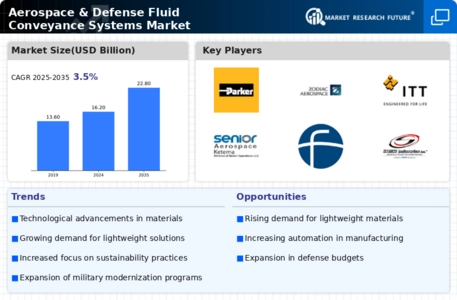

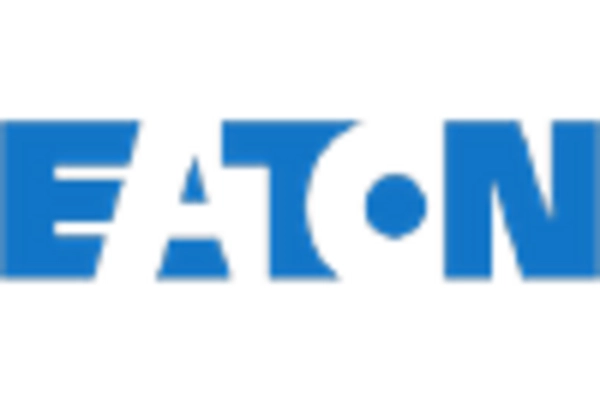
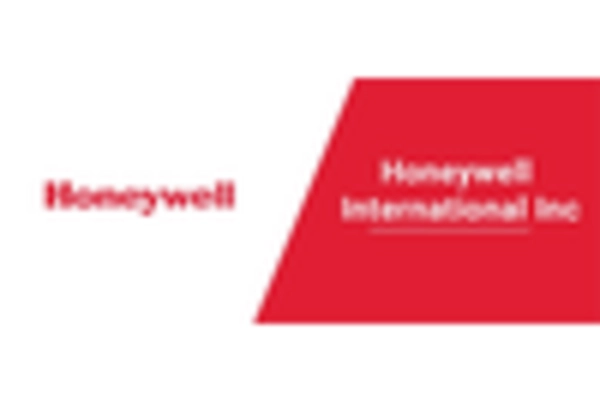
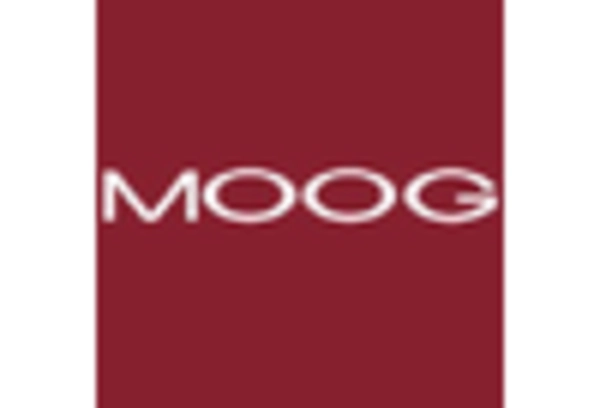
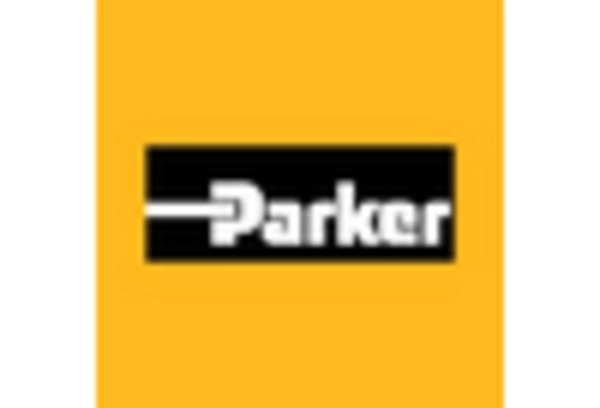


Leave a Comment